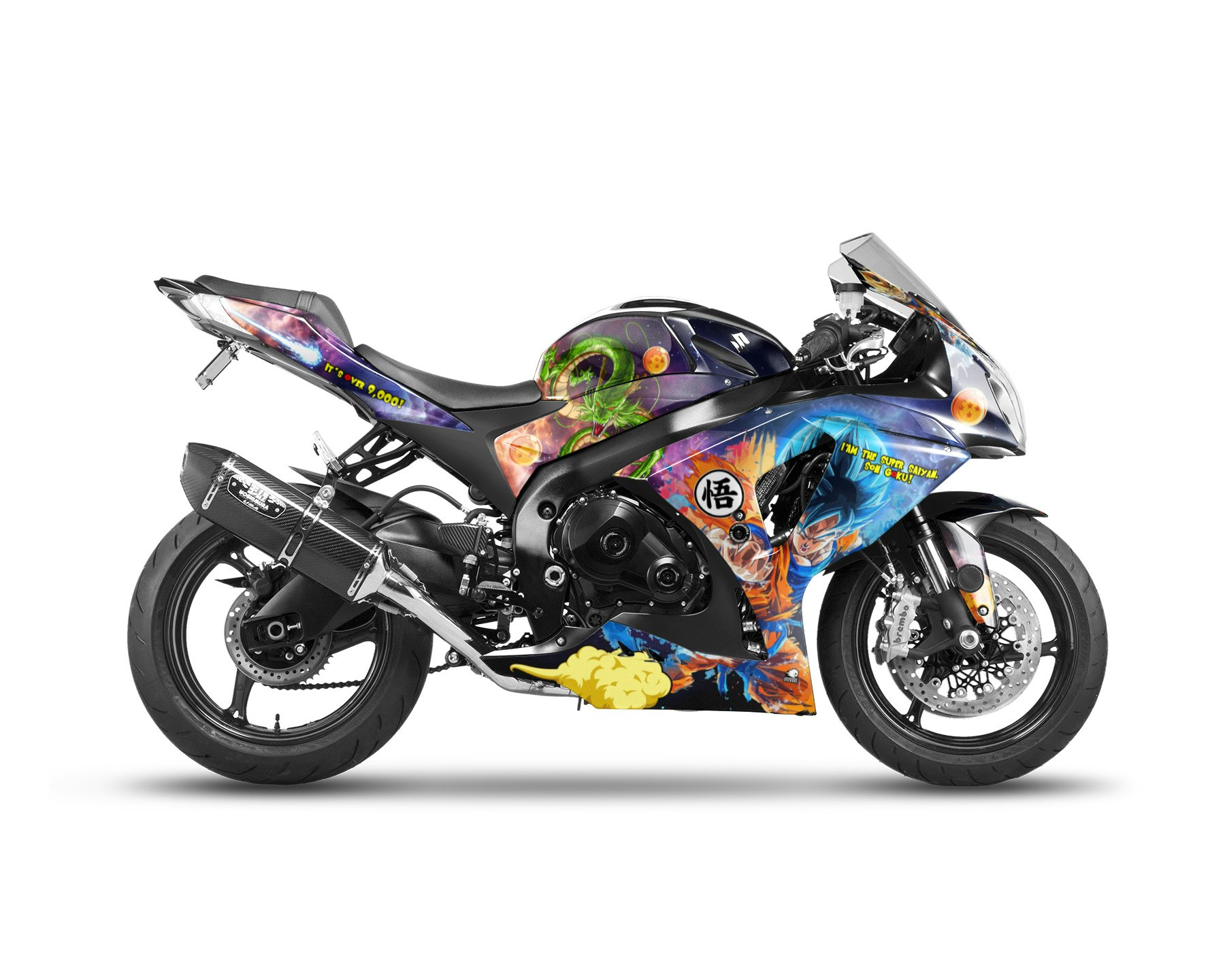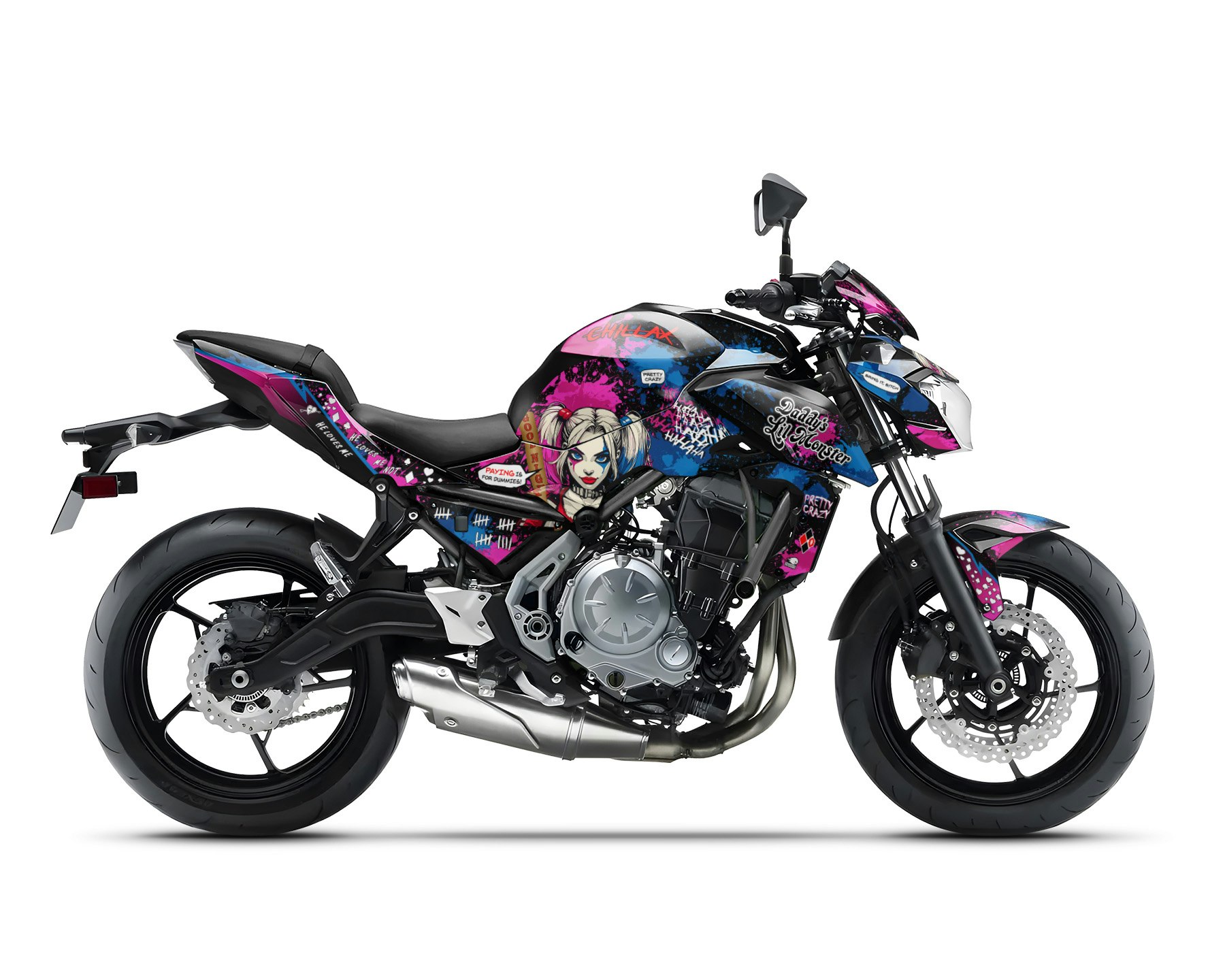Sport Bike graphics: A Comprehensive Guide
Sport bikes are more than just machines; they are expressions of speed, style, and individuality. And a crucial element in expressing that individuality is the bike’s graphics. From subtle pinstripes to bold, vibrant designs, graphics play a significant role in how a sport bike is perceived. This comprehensive guide delves into the world of sport bike graphics, exploring their history, types, application techniques, and the impact they have on the overall aesthetic.
A Brief History of Sport Bike Graphics
The evolution of sport bike graphics mirrors the evolution of the bikes themselves. Early motorcycles were often utilitarian, with minimal ornamentation. However, as racing gained popularity, manufacturers began to recognize the marketing power of distinctive visuals. Early racing liveries, often simple color schemes and number plates, laid the foundation for the more elaborate designs that followed.

In the mid-20th century, as motorcycle technology advanced, so did the complexity of graphic design. Bold stripes, geometric shapes, and stylized lettering became commonplace. The rise of Japanese manufacturers in the late 20th century brought with it a new wave of design aesthetics, incorporating vibrant colors and intricate patterns. Today, sport bike graphics are a blend of art, technology, and personal expression.
Types of Sport Bike Graphics
The world of sport bike graphics offers a diverse range of options, each with its own unique characteristics:
Decals:
Decals are perhaps the most common type of sport bike graphic. They are essentially stickers made from vinyl or other durable materials. Decals can range from simple logos and lettering to complex, multi-layered designs. They are relatively easy to apply and remove, making them a popular choice for customization.
Paint:

Painted graphics offer a more permanent and integrated look. They are applied directly to the bike’s fairings and can be clear-coated for added protection. Painted graphics provide a seamless finish and can be customized with an endless array of colors and designs. However, they are more expensive and time-consuming to apply than decals.
Wraps:
Wraps are a relatively new type of graphic that has gained popularity in recent years. They consist of a large sheet of vinyl that is wrapped around the bike’s fairings. Wraps offer a similar level of customization to painted graphics but are easier to remove and replace. They also provide a layer of protection for the original paint.
Pinstriping:
Pinstriping is a classic technique that involves applying thin lines of paint or vinyl to highlight the bike’s curves and lines. Pinstriping can add a touch of elegance and sophistication to any sport bike.
Factory Graphics:
Most sport bikes come from the factory with pre-designed graphics. These graphics are typically designed to reflect the bike’s model and brand identity. While factory graphics are often well-executed, many riders choose to customize their bikes with aftermarket graphics to create a unique look.
Application Techniques for Sport Bike Graphics
Applying sport bike graphics requires patience, skill, and attention to detail. Whether you’re working with decals, paint, or wraps, the key is to ensure a smooth, bubble-free finish.
Decal Application:
Applying decals involves cleaning the surface, carefully peeling the backing, and applying the decal with even pressure. It’s crucial to avoid trapping air bubbles and to ensure the decal adheres properly.
Paint Application:
Painting graphics requires specialized equipment and expertise. It’s best left to professionals who have experience with automotive or motorcycle painting. The process involves preparing the surface, applying primer, painting the design, and finishing with a clear coat.
Wrap Application:
Applying wraps requires a combination of heat, pressure, and skill. The vinyl is heated to make it pliable and then stretched and conformed to the bike’s curves. It’s important to avoid wrinkles and bubbles.
Pinstriping Application:
Pinstriping can be done with paint or vinyl. Paint pinstriping requires a steady hand and specialized brushes. Vinyl pinstriping is easier to apply and offers more flexibility in design.
The Impact of Graphics on Sport Bike Aesthetics
Graphics play a crucial role in shaping the overall aesthetic of a sport bike. They can convey a sense of speed, aggression, sophistication, or individuality.
Color Schemes:
The choice of colors is one of the most important aspects of sport bike graphics. Bold, contrasting colors can create a dynamic and eye-catching look, while more subtle color combinations can convey a sense of elegance and refinement.
Design Elements:
The specific design elements, such as stripes, geometric shapes, and lettering, can also have a significant impact on the bike’s aesthetic. Sharp, angular lines can create a sense of aggression, while flowing curves can convey a sense of fluidity and speed.
Personalization:
Graphics allow riders to personalize their bikes and express their unique style. Whether it’s a custom paint job, a set of aftermarket decals, or a unique wrap, graphics can transform a stock bike into a one-of-a-kind machine.
Choosing the Right Graphics for Your Sport Bike
With so many options available, choosing the right graphics for your sport bike can be a daunting task. Consider the following factors:
Personal Style:
The most important factor is your personal style. Choose graphics that reflect your taste and preferences.
Bike Model:
Consider the model and year of your bike. Some graphics may be better suited to certain models than others.
Budget:
Graphics can range in price from a few dollars for simple decals to thousands of dollars for custom paint jobs. Set a budget before you start shopping.
Installation:
Consider whether you’re comfortable applying the graphics yourself or if you’ll need to hire a professional.
Maintaining Your Sport Bike Graphics
Proper maintenance is essential to keep your sport bike graphics looking their best.
Cleaning:
Regularly clean your bike with a mild soap and water solution. Avoid using harsh chemicals or abrasive cleaners.
Waxing:
Waxing your bike can help protect the graphics from the elements and keep them looking shiny.
Storage:
When storing your bike, try to keep it out of direct sunlight and extreme temperatures.
The Future of Sport Bike Graphics
The world of sport bike graphics is constantly evolving. New technologies and materials are being developed all the time, opening up new possibilities for customization and design. Expect to see even more innovative and creative graphics in the future.
Conclusion
Sport bike graphics are more than just decorations; they are an integral part of the bike’s identity. They allow riders to express their individuality and create a machine that is truly their own. Whether you prefer a subtle touch of pinstriping or a bold, eye-catching design, the world of sport bike graphics offers something for everyone. By understanding the different types of graphics, application techniques, and maintenance requirements, you can ensure that your sport bike looks its best for years to come.
sport bike graphics
